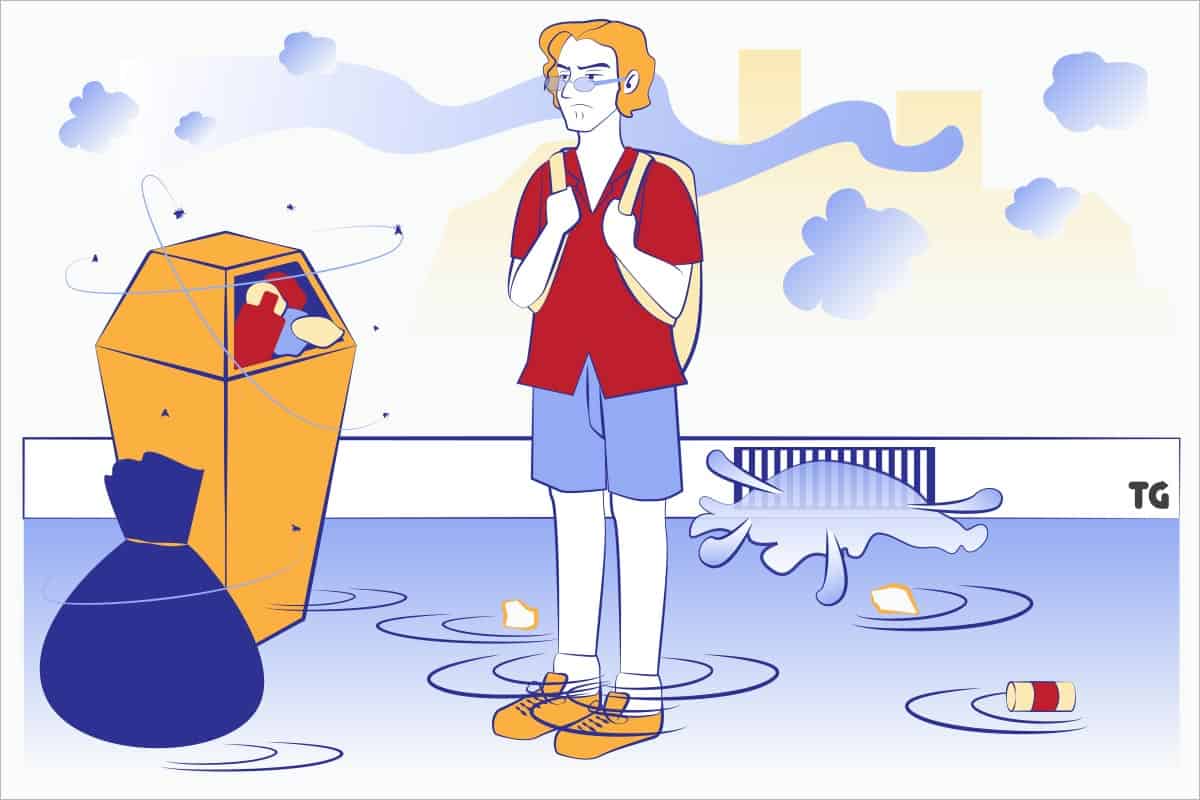Bangkok is known as the realm of modernization yet also carries historical architecture and Thai tradition. The city is home to temples, markets, and skyscrapers that attract millions of tourists worldwide.
Bangkok has a long-standing reputation for being a dirty city. However, the term “dirty” can be hard to define. People have different versions of what they would deem dirty. That’s because cleanliness is subjective. So, is Bangkok a clean or dirty city?
Bangkok is not the cleanest city in the world, but it is relatively clean overall. Like any metropolis of 10 million people, some outer areas can be on the dirtier side with slums and littering. However, the downtown business district and top tourist destination spots tend to be spotless.
But, before giving verdicts about Bangkok’s cleanliness, let’s look at both ends of the spectrum – what makes Bangkok clean and what makes it dirty.
4 Reasons Why Bangkok Is a Clean City
1. Culture as the center of its cleanliness
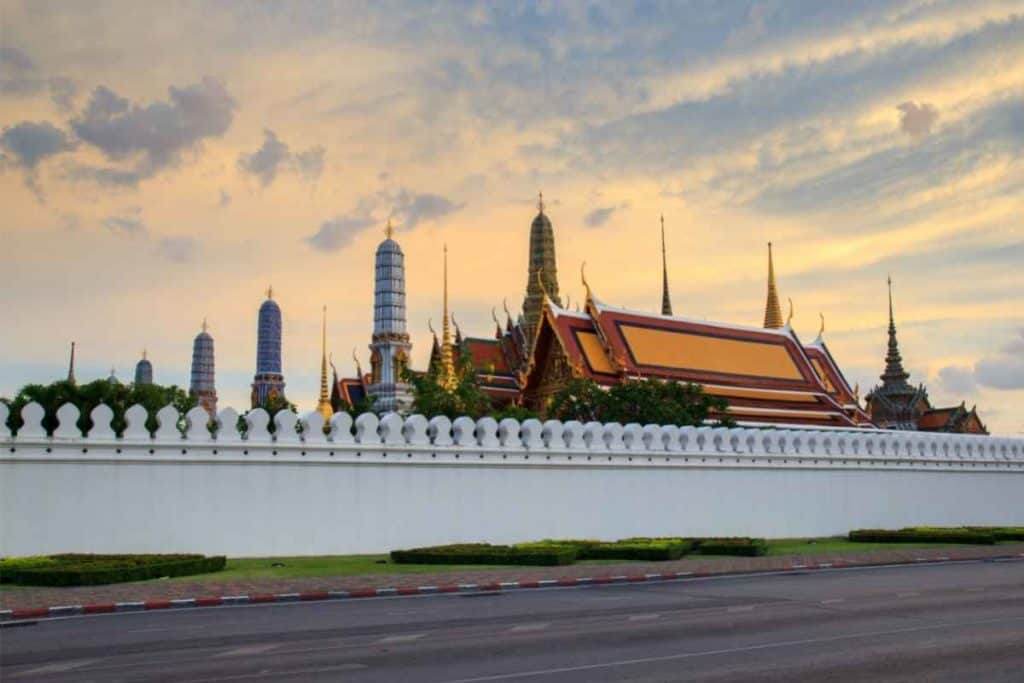
Religion and tradition also play a significant role in the city’s cleanliness. With 40,000 temples in the city, Thai people value gloriousness with modesty and purity. Amongst all traditional attractions, Wat Pho, home to the reclining Buddha, stands out the most. Every staff member is committed to making sure that the precinct is always lovely and clean.
Cleaning practices are also highly respected, especially by Buddhist monks in the region. They sweep, polish, wash, and tidy their ways to inner peace. Thai Buddhists receive daily duties of cleaning or offering prayers at the temple, from which others are also invited to come to pay their help and respects.
On Earth Day this year, Buddhists lit 33,000 candles around the Golden Shrine, attempting a Guinness World Record for the most significant flame image. This commemorated their message of “cleanse the mind, cleanse the world.”
2. The people of Bangkok
Local people, especially the younger Thai people, are very well-disciplined, and this can be seen in the instances where there is no trash found after the mobs have been cleared from the protest sites. Moreover, several trash cans around the city are labeled as ‘recycle,’ ‘plastic,’ and ‘waste,’ an effort by the government to encourage recycling and reduce plastic.
Thai people live amongst humid and high temperatures, with no seasonal changes and annual temperatures all year round. You will often notice that when interacting with locals that Thai people have a unique code of hygiene. Thais usually shower two, three, or even four times a day.
Even before the pandemic, Thai people were wearing masks for the purpose of pollution. They were way ahead of the world when it came to sanitation and preventive measures. In the same way, national parks like Lumphini give the perfect impression of modern-day Bangkok and its people – greenery, lakes, athleisure, and wildlife.
3. Public transportation
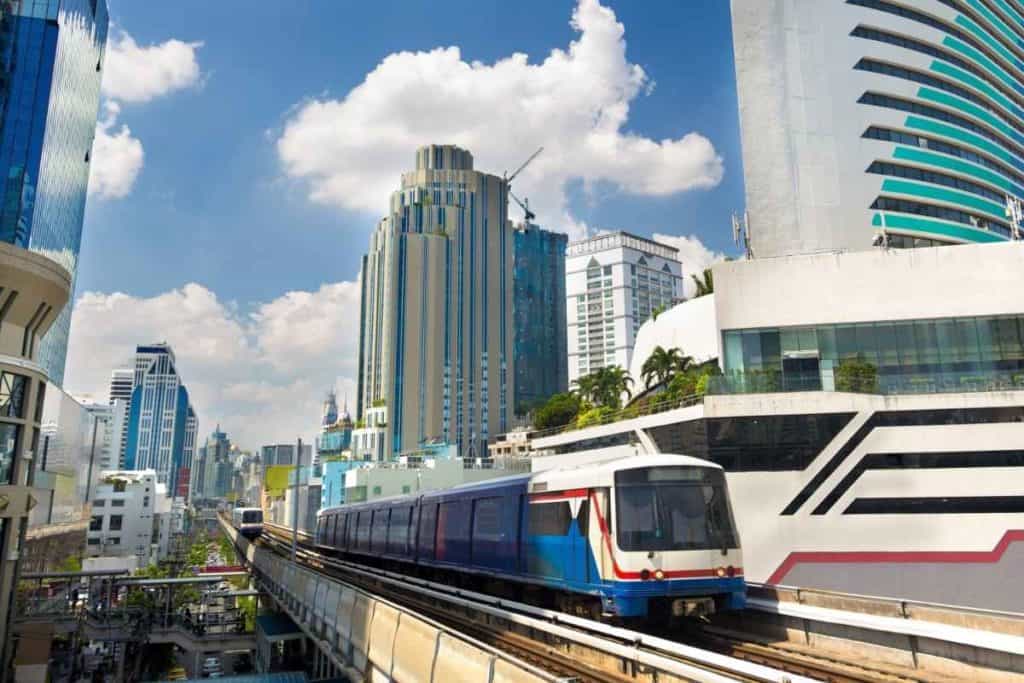
Bangkok’s best things are its BTS (no, not the famous Kpop boy band, but an abbreviation for the Bangkok Mass Transit System) and the MRT (Metropolitan Rapid Transit). These trains are clean and can take you to almost everywhere in the city in relative comfort.
The BTS Skytrain is kept clean because of rules and regulations. Eating food is prohibited inside the train. Also, you are not allowed to bring on Durian onto the train (a popular yet smelly fruit in Thailand).
The trains can be very jam-packed with students and office goers during crowded hours but remain in good condition. The train stations are also immaculate and safe even at night. Buses are also another good option for transportation in the city, especially if you take the new air-conditioned vehicles.
The best part is that all these options are not only clean and comfortable to travel around with, but they are also very cheap. They cost only around 25-40 THB per ride, depending on the distance.
4. Luxurious and modern areas of Bangkok
Bangkok is insanely clean when it comes to its lavish, air-conditioned malls. Consuming as much power as entire provinces, they are amongst the biggest shopping malls in the world. There is no doubt that the mega malls and shopping outlets are pristine.
The same goes for outdoor markets such as Chatuchak, a place regularly visited by tourists and constitutes the most significant local market in the city.
ICONSIAM, a 750,000 square foot mall alongside the bank of the Chao Phraya River and referred to as “Mother of All Malls,” is one of those clean tourist attractions. With expensive brands such as Louis Vuitton and Gucci, the entire ground floor of Icon Siam depicts “picture-perfect Bangkok.” It is built to resemble a dream-like floating market with colorful lights, playful food stalls, and traditional clothing.
However, the same can’t be said for Bangkok’s actual floating markets, such as Damneon Sauak, with polluted green water, visible trash, and some extent of smell. Boats often get trapped amongst traffic as many tourists are asked to go along the market at once.
And, if you were to see other outdoor areas, such as the famous “Night Market” on Sukhumvit road, you would get a different perspective as well – thrifted clothes, garbage, and a crowded nightlife.
4 Reasons Why Bangkok Is a Dirty City
So, despite these systems of cleanliness, Bangkok still has its grungier side. Here are some reasons that might be responsible for its ‘dirty city’ reputation.
1. Flooding
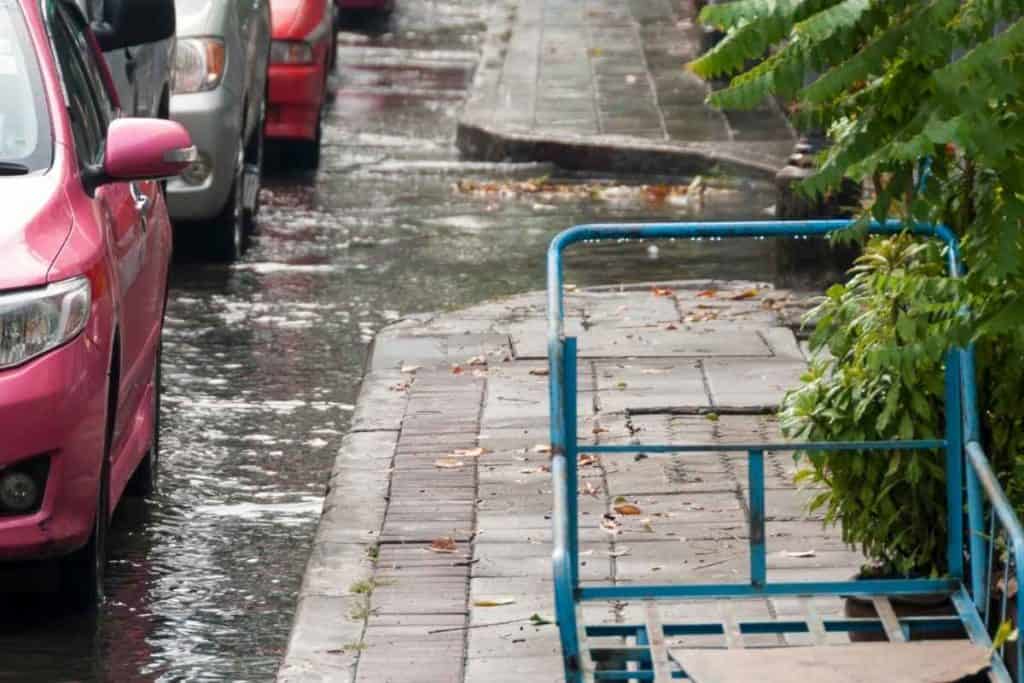
Floods are a massive problem in Bangkok. They bring more traffic jams due to road blockages, hygiene problems from the dirty water, and of course, familiar sights of cars breaking down on the roadsides.
The city expansion projects and the poor infrastructure designs are the main reasons Bangkok and its nearby areas are constantly experiencing floods every year.
If you visit Bangkok during Thailand’s rainy season prepare to see roads flooded in the city center. Particularly in September and October, when there is a heavy downpour, Bangkok’s streets turn into rivers very quickly. You are guaranteed to get your feet wet. To make matters worse, the drains rise so the water is a murky brown.
The chances are that if you experience a flood while visiting Bangkok, your verdict will lean towards the narrative of Bangkok being a dirty place.
2. Slums and street vendors
There are problems with the cleanliness of the city when it comes to homelessness. And this goes beyond the homeless people you see on the streets or sleeping under bus stops. In 2020, 6.8% of Thailand’s population lived below the national poverty line. (Source)
Khlong Toey:
Even though it’s a rare sight to see slums in an ever-developing city like Bangkok, areas such as Khlong Toey exist right in the heart of the city. Khlong Toey area is about 1.5 square kilometers in size and consists of relatively low and swamp-like land. The majority of the homes there are on stilts over the polluted, stagnant water. This area is also prone to flooding during the rainy season.
There are over 100,000 residents in the Khlong Toey area, and many of them still do not own the homes in which they live, although they have been living there for decades.
Street Food:
As for the street vendors, they were once considered the backbone of the city’s roadside economy. Since 2016, the Bangkok Administration (BMA) has moved 20,000 street vendors across 478 locations, admitting hygiene issues and poor maintenance.
Since then, there has been an emphasis on the importance of street food for low-income workers and customers who travel far to come work in the city. While working to improve these measures, the vendors are expected to keep their stations clean.
3. Air pollution
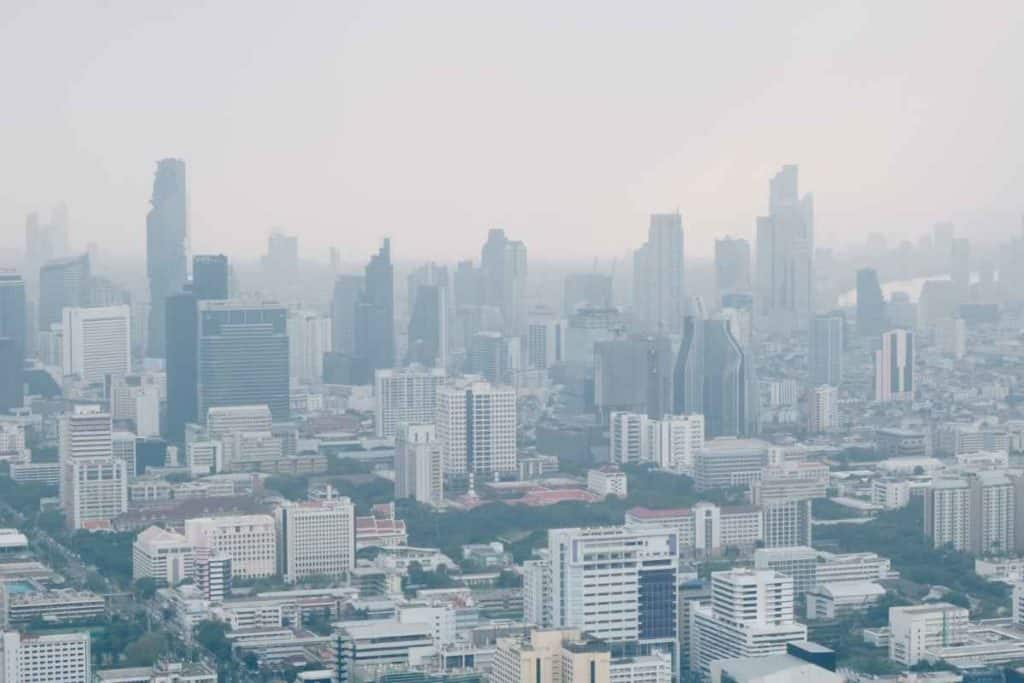
Even long before the Covid started in 2020, masks were worn regularly due to the PM rate of 2.5 in the city. In January 2019, the government ordered many schools to be closed due to a particularly heavy haze that lasted for several weeks. (Source)
It is common in Bangkok to see smog and experience hazy weather, especially during the dry seasons. The notoriously famous Bangkok traffic is one of the main factors in causing air pollution, the factories located near the outskirts of Bangkok, and the construction sites in the city.
During the rainy season, the air quality index shows positive results, but with rain comes another main problem in this city: flooding. Even with the air pollution problem, Bangkok ranked 48th out of 68 cities in Thailand for a clean database record. (Source)
4. Governmental awareness
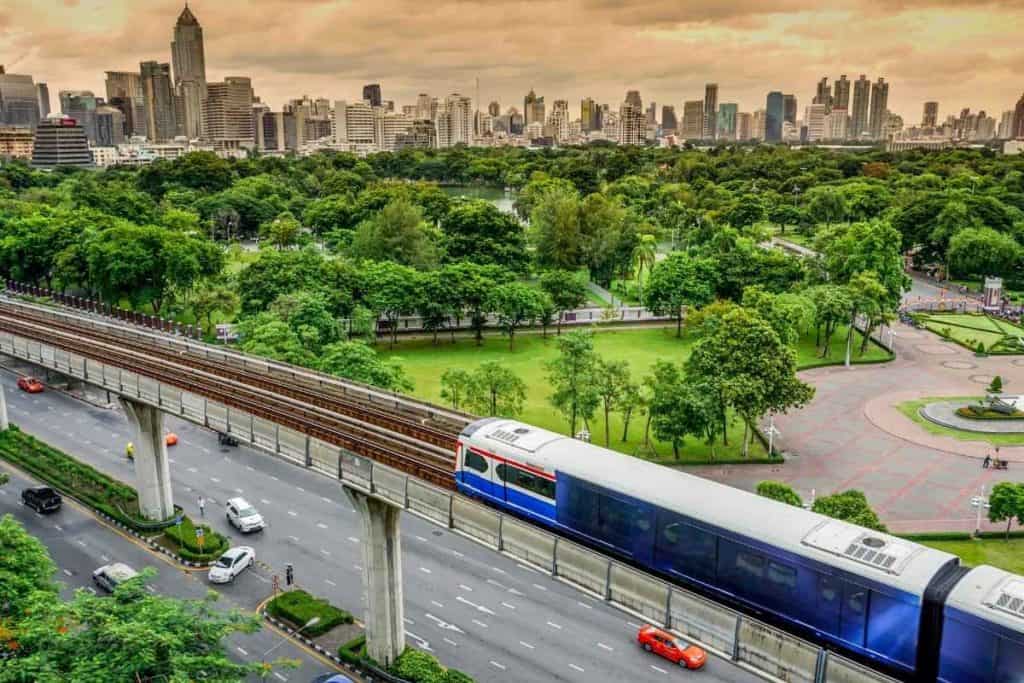
It is no surprise that with 20 million annual tourists and a congested population, Bangkok is suffering from being at its most clean level. However, the city is working on significant projects to help solve this issue.
Enter Bangkok 250 is a project initiated under the Urban Design and Development Center, hoping to tackle urban regeneration and make Bangkok more “livable” by 2032.
This includes one of the significant problems that formed Chaophraya Sky Park. This project also promises to reduce greenhouse gases by 20-30% by the year 2030. With 11 new parks to open up, this is just the beginning of the future vision for Bangkok.
The UN is also working closely to tackle Bangkok’s air pollution impact, which was reduced by 22% since the cleaning and isolation measures induced during the pandemic.
Bangkok’s Dirty Reputation: Truth or Misconception?
It is evident that Bangkok is a city of many perspectives. With its occasional garbage and pollution, the city might not be as clean as the likes of Singapore, Kuala Lumpur, or Tokyo.
However, compared to other countries in the developing SEA region, Bangkok has its fair share of cleanliness. It is home to some of the most popular tourist attractions globally, which are luxurious, polished, and spotless places to visit.
While Bangkok is working to tackle its population, measures are being taken to ensure that the city becomes “green,” environmentally friendly, and cleaner than ever before. It is expected that the government will continue to self-clean and preserve the city’s beauty.
But whatever you think about Bangkok’s level of cleanliness, there is no doubt that the city’s grungier sides all add to its unique character.
Like always, if you want to discover more about Thailand, stay guided with ThaiGuider. You might learn something you never knew about this unique country.
THINKING ABOUT A TRIP TO THAILAND?
I am working on a FREE Thailand Travel Guide with a FULL 7 Day Itinerary. Be the first to receive it!
Thank you for signing up.
Something went wrong.
